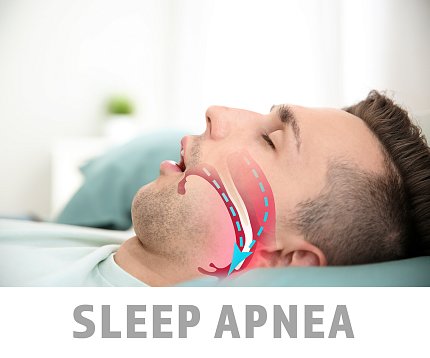Study Explains Link to Increased Cardiovascular Risks for People with Obstructive Sleep Apnea
Researchers have found that people with obstructive sleep apnea have an increased cardiovascular risk due to reduced blood oxygen levels, largely explained by interrupted breathing. Obstructive sleep apnea has long been associated with increased risk of cardiovascular issues, including heart attack, stroke and death, but the findings from this study, partially supported by NIH and published in the American Journal of Respiratory and Critical Care Medicine, show the mechanism mostly responsible for the link.

Photo: PIXEL SHOT/SHUTTERSHOCK
“These findings will help better characterize high-risk versions of obstructive sleep apnea,” said Dr. Ali Azarbarzin, a study author and director of the Sleep Apnea Health Outcomes Research Group at Brigham and Women’s Hospital and Harvard Medical School. “We think that including a higher-risk version of obstructive sleep apnea in a randomized clinical trial would hopefully show that treating sleep apnea could help prevent future cardiovascular outcomes.”
Researchers reviewed data from more than 4,500 middle-age and older adults who participated in the Osteoporotic Fractures in Men Study and the Multi-Ethnic Study of Atherosclerosis. Investigators sought to identify features of obstructive sleep apnea that could explain why some people were more likely than others to develop cardiovascular disease or related death.
Physiological features of obstructive sleep apnea assessed included hypoxic burden, which is a reduction in blood oxygen levels during sleep; ventilatory burden or interruptions in breathing due to airway obstruction; and nighttime arousals, which are when a person suddenly wakes up from sleep due to interrupted breathing and that can cause their blood pressure or heart rate to rise.
While sleep apnea severity is defined as how many times the airways become blocked during an hour of sleep, this study sought to better characterize underlying mechanisms of obstructive sleep apnea and identify those that strongly predict increased cardiovascular risks.
“Understanding these mechanisms could change the way that sleep apnea clinical trials are designed and what is measured in clinical practice,” said Dr. Marishka Brown, director of the National Center for Sleep Disorders Research at NHLBI.
This study was partially supported by NHLBI, NCATS, NIA and NIAMS.
